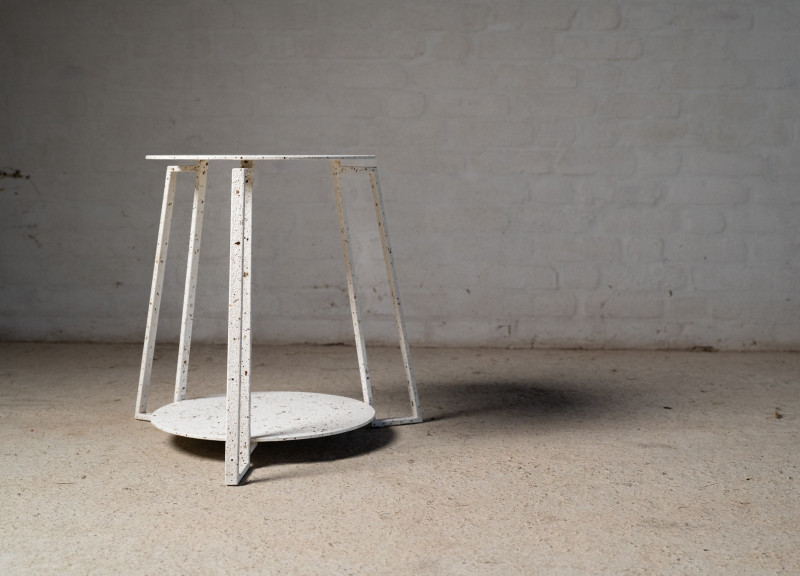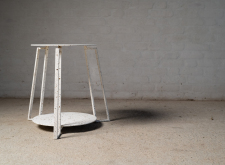5 key facts about this project
### Project Overview
The design is situated in a contemporary context, focusing on the integration of modern aesthetics and functional form. It emphasizes a minimalistic approach, prioritizing usability and coherence within various environments. The intent is to create a piece of furniture that challenges traditional forms while maintaining an elegant simplicity.
### Material and Construction
The project incorporates a deliberate selection of materials that underscore both durability and aesthetic appeal. Steel serves as the primary structural component, utilized in the table’s legs and upper frame. Its strength and industrial texture provide stability while highlighting imperfections that contribute to its character. The tabletop features a porcelain enamel finish, which enhances the surface's resilience and ease of maintenance. The matte quality of the steel juxtaposes the subtle sheen of the enamel, creating a visually engaging contrast. Additionally, concrete is employed as the base material, reinforcing stability and contributing to the design's industrial aesthetic.
### Structural and Aesthetic Characteristics
The triangular leg configuration is engineered to support the tabletop efficiently, reducing perceived bulk while ensuring robustness. This design choice not only facilitates structural integrity but also imparts a sense of lightness, making the piece adaptable for diverse settings, including residential and commercial spaces. The use of a monochromatic color palette further emphasizes its versatility, allowing it to integrate into various environments while serving as a focal point. The tactile qualities of the materials invite user interaction, enhancing the dual role of the table as both a functional item and a sculptural element. The project reflects a commitment to sustainability through the longevity of its materials, minimizing the need for replacements and supporting environmentally responsible design practices.


















































